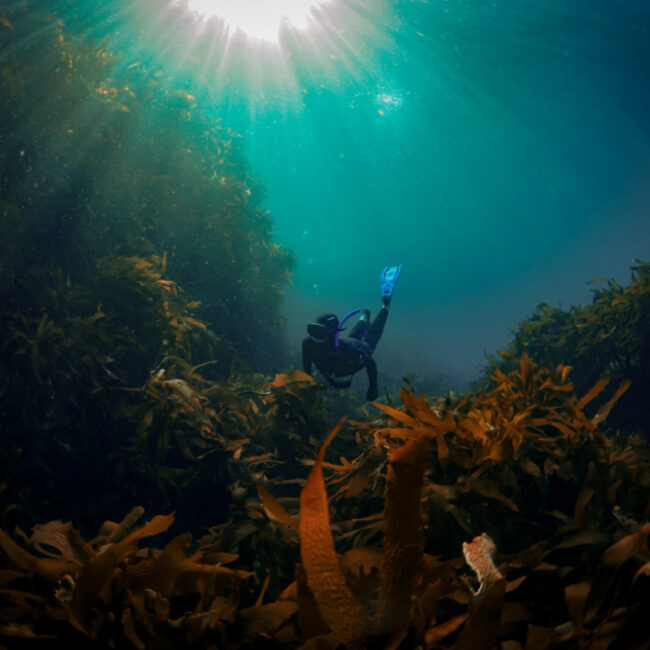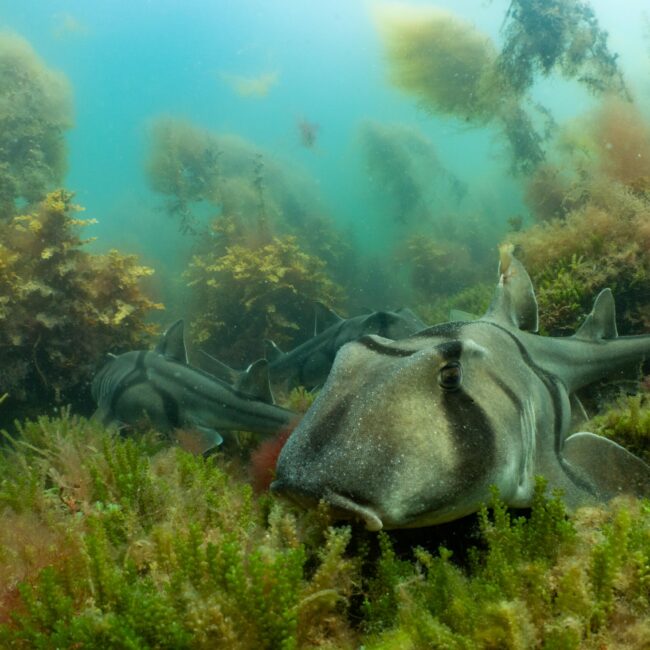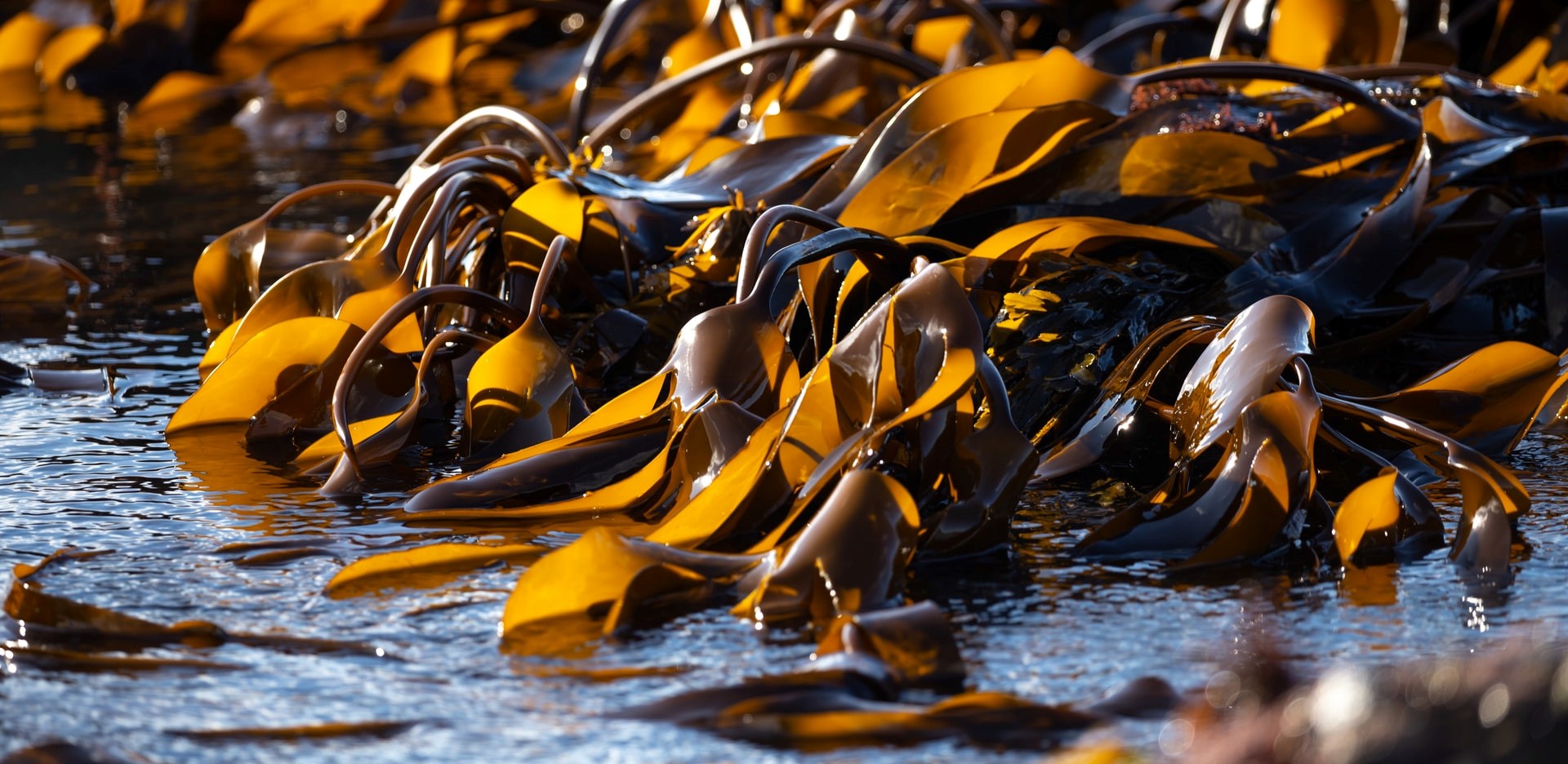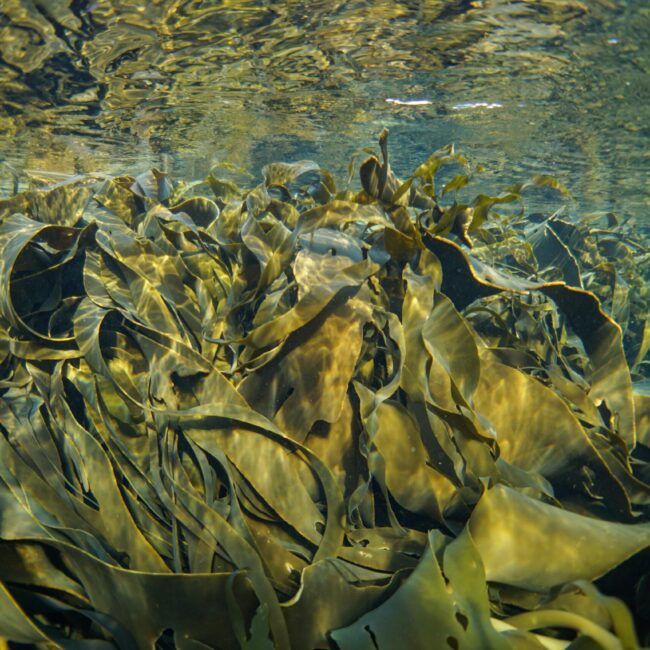Seaweeds are unsung heroes of healthy oceans, but next week they’ll take centre stage when 500 seaweed science and industry experts gather in Hobart to talk about seaweed protection and potential.
The prestigious International Seaweed Symposium (ISS) is being held in the Australasian region for the first time in its 75-year history.
“We’re so pleased to be welcoming these delegates from around the world to our fabulous city of Hobart, along with the 200 delegates joining us online, for a truly exceptional program,” said ISS 2023 co-chair Professor Catriona Hurd, who leads the Seaweed Program at the Institute for Marine and Antarctic Studies (IMAS).

Photo: Joanna Smart
“Climate change impacts on seaweeds and finding solutions to these are a significant part of the Symposium this year, but many other topics are covered as well, including production and processing techniques, and product development.
“Presentations range from the molecular biology and physiology of different species, through to developing value chains, the socio-impacts of the industry, and the role of Indigenous communities.
“We also have sessions on efforts to tackle invasive seaweed species, and agricultural applications such as using seaweed extracts as plant-biostimulants.”
Here are just some of the key events and topics covered at the Symposium:
Te Tiaki Mahinga Kai: partnering with community to restore coastal ecosystems
Community-led restoration of kelp forest ecosystems and the fisheries they support is at the heart of the inspiring Te Tiaki Mahinga Kai research partnership in Aotearoa New Zealand.
University of Otago researcher, Professor Chris Hepburn, co-leads the research partnership program with indigenous communities, primarily the Ngāi Tahu tribe.
“Sharing the benefits of research and restoration programs with communities is central in developing true partnership models and supporting the future-focused restoration of coastal ecosystems,” Prof Hepburn said.

Photo: Joanna Smart
“Te Tiaki Mahinga Kai means looking after the food gathering areas and practices – and this partnership is about providing the data to support the protection and restoration of fisheries, practices, and rights of Ngāi Tahu.
“While restoring fisheries for the cultural keystones like the pāua (abalone, Haliotis iris) is often a focus, a form of stewardship applied by Tangata Tiaki called kaitiakitanga, values and acknowledges the role of all living things. This holistic approach understands the foundational role of seaweed in these ecosystems.”
Prof Hepburn is giving a plenary address on Tuesday, 21 February at 9:00am as part of a session hosted by the Tasmanian Aboriginal Committee.
Seaweed bioplastics innovation creates opportunity for climate-affected coastal communities
Seaweed biopolymer applications are on the rise as demand for sustainable materials increases – and it’s creating a much-needed opportunity for climate-affected coastal communities in developing nations.
“With declining fish stocks and marine habitats leaving fishermen without income in many nations, a significant pattern is emerging with women taking up seaweed farming,” said Ms Fionnuala Quin, who is the Founder and SeaEO of Australian bioplastics business, Kelpy.
“But these [climate-affected] coastal communities face a rapidly closing window to meet this growing demand and to secure a fair share of the uplift. So rapid scale-up of seaweed cultivation and access to fair trade will be essential to securing the benefits of this emerging market.”
Kelpy has developed two world-first seaweed packaging innovations to replace single use plastics – and it is a genuine circular product with sea to soil benefits.
“But this is not enough. We must develop multiple product streams derived from biomass yields, to offset higher and lower value uses,” Ms Quin said. “Coupled with Fair Trade Agreements, this will ensure the best outcomes for farmers at the climate change coalface.”
Ms Quin will be speaking on Monday, 20 February at 3.30pm. This session is a mini-symposium sponsored by the National Foundation for China-Australia relations.

Seaweed as carbon sink: challenges and opportunities
The potential for seaweeds (macroalgae) to sequester carbon is a hot topic in the scientific literature and public media, and will be the focus of a special session at the ISS.
“Macroalgae are increasingly being considered as a nature-based climate change mitigation solution, but several uncertainties still remain around whether macroalgae carbon can be included in climate policy actions and carbon crediting schemes,” said mini-symposium organiser, Dr Albert Pessarrodona.

Photo: Joanna Smart
A research fellow at the University of Western Australia’s Oceans Institute and School of Biological Sciences, Dr Pessarrodona is interested in the role seaweeds play in the coastal carbon cycle at the global level, and whether seaweeds can provide solutions to climate change mitigation.
“In this session, several scientific experts will provide an overview of some knowledge gaps that preclude macroalgae from being integrated into existing carbon accounting frameworks, and we will discuss the opportunities that the uniqueness of macroalgae carbon sequestration may bring,” he said.
Dr Pessarrodona will be speaking at the Carbon cycling and sequestration by macroalgae mini-symposium being held on Tuesday, 21 February from 1.30–3.15pm.
The 24th ISS will be held at the Hotel Grand Chancellor in Hobart from 19–24 February, and is hosted by the University of Tasmania’s Institute for Marine and Antarctic Studies (IMAS) on behalf of the International Seaweed Association. The full program is available here.
Cover image: Lonsdale outer reef (Victoria). Photo: Antonia Cooper | Reef Life Survey


